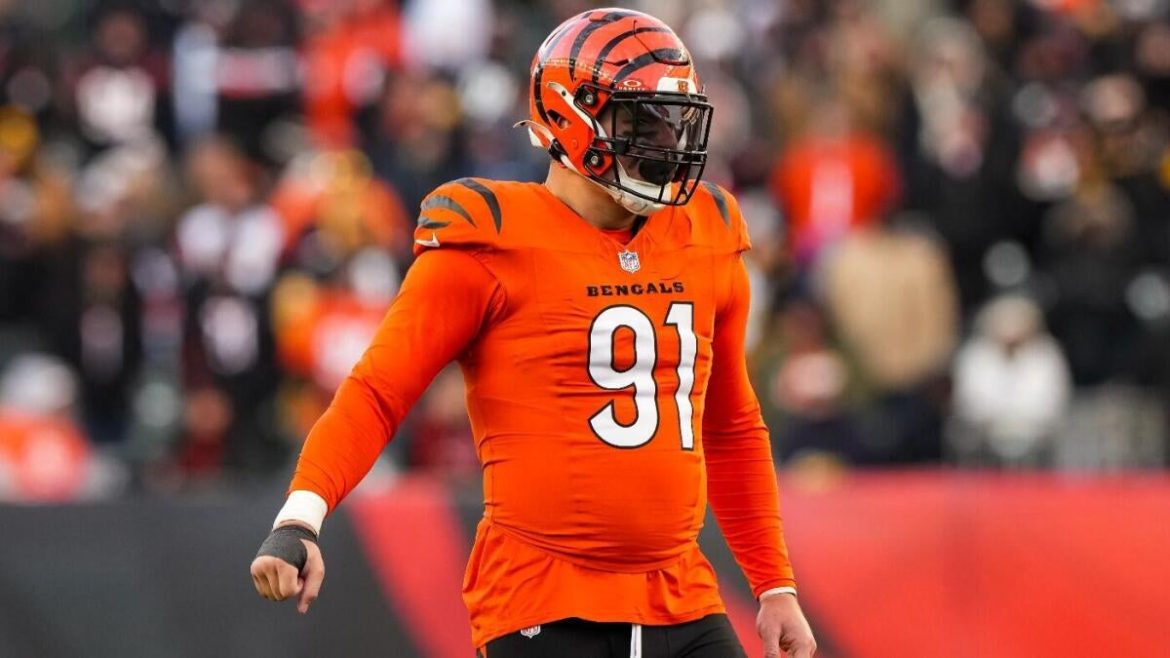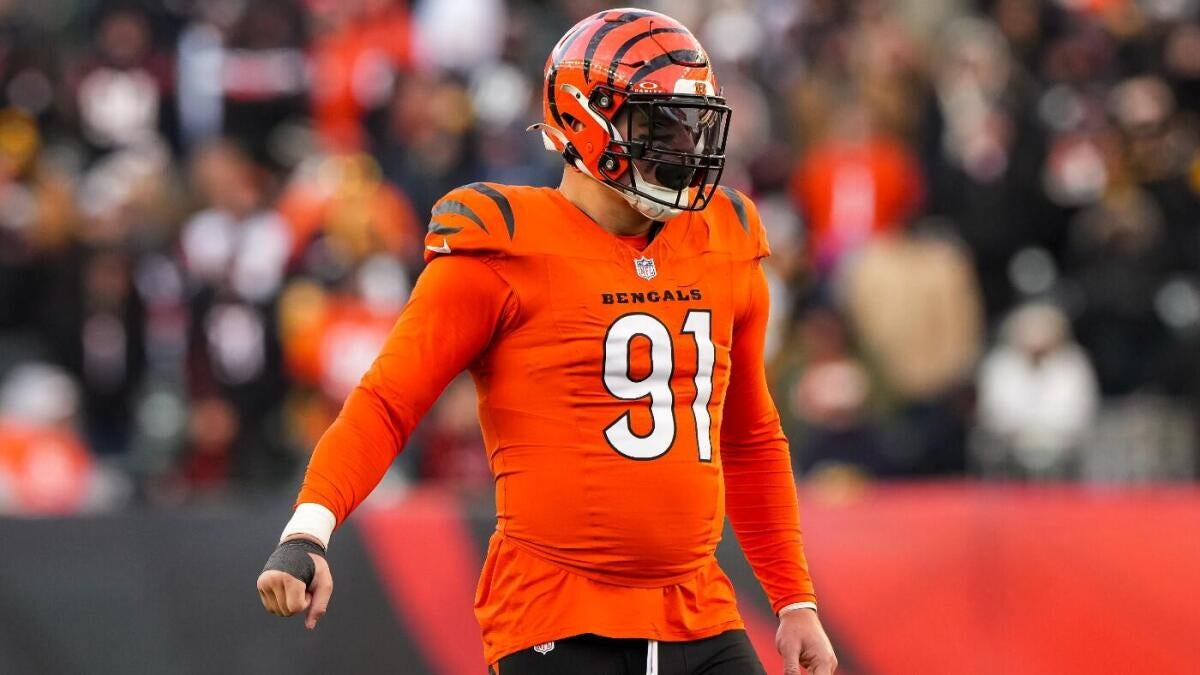The ongoing contract dispute between Cincinnati Bengals defensive end Trey Hendrickson and his team presents a complex, multifaceted case that encapsulates many modern dynamics of NFL contract negotiations. Known as one of the league’s premier edge rushers, Hendrickson’s insistence on a long-term, top-market deal—paired with the Bengals’ reluctance to meet his demands—has spiraled into a stalemate with significant implications for both parties. This report explores the background, current status, key issues, and potential resolutions of the dispute, while assessing its wider impact on the Bengals’ defense and organizational communication.
Background: Hendrickson’s Performance and Contract History
Trey Hendrickson has emerged as one of the NFL’s dominant pass rushers over recent seasons. Statistically, his credentials are impressive: he led the league with 17.5 sacks in the 2024 season, and amassed 35 sacks over the past two seasons—figures that place him at or near the top of his position group. He earned multiple Pro Bowls and All-Pro honors, cementing his status as an elite defensive end.
Originally signed by the Bengals as a free agent after the 2020 season on a four-year, $60 million contract, Hendrickson secured an extension in 2023. This agreement added a year and roughly $21 million in cash but appears to have been a short-term measure rather than a comprehensive, long-term commitment. Despite solid on-field production, Hendrickson has repeatedly expressed a desire for a contract that reflects his market value and offers substantial guaranteed money and security beyond 2025.
Current Situation: Contract Talks Stalled and Growing Frustrations
As of mid-2025, the negotiations have stalled with little positive movement. Hendrickson has publicly stated that he will not play for the Bengals under the current contract, making it clear he is holding out for a deal that aligns with his contributions and market worth. He explicitly voiced frustration over poor communication from the Bengals’ management, noting that direct dialogue with his agent has been “nonexistent” for months following the NFL Draft.
The Bengals’ front office seems unwilling to budge on contract terms, especially around guarantees and contract length. Their offers reportedly lean towards short-term deals with less guaranteed money, whereas Hendrickson demands a longer-term arrangement offering stability. This disconnect has transformed the negotiations into a “personal” matter, according to Hendrickson, and threatens to escalate tensions further.
Key Issues at the Heart of the Dispute
1. Market Value and Compensation
Hendrickson seeks compensation comparable to the top echelon of edge rushers in the NFL—a group whose salaries have been rising significantly. Given Hendrickson’s sack totals and consistent Elite-level play, industry insiders argue that he is deserving of a near-top-market deal, potentially worth upwards of $35 million per year in cash guarantees and total contract value.
The Bengals, on the other hand, appear to be leveraging his impending contract expiration, refusing to match the highest market prices or offer comprehensive guarantees, which has fueled Hendrickson’s dissatisfaction.
2. Contract Length and Job Security
A central demand from Hendrickson is long-term job security. Reports indicate he finds short-term deals—such as a one or two-year contract—insufficient and wants assurances that provide stability over multiple years. This reflects a broader trend in NFL contracts where players seek protection against injury and career uncertainty through longer, guaranteed deals.
3. Communication Breakdown
Beyond financial terms, a recurrent theme is the breakdown in communication between Hendrickson’s camp and Cincinnati’s management. Hendrickson has criticized the Bengals for a lack of transparency and direct engagement with his agent, contributing to growing resentment and mistrust. He cited a disappointing episode involving comments from a Bengals executive at the annual league meeting, which added to his frustration.
Potential Consequences for Bengals and Player
This dispute is not merely contractual; it affects team performance and morale. The Bengals depend heavily on Hendrickson’s pass-rushing prowess to support an offense led by Joe Burrow, who is facing a defense widely considered suspect. Losing or benching Hendrickson—or trading him due to these issues—would severely weaken Cincinnati’s defensive front. The Bengals could save roughly $16 million in salary cap space if they chose to trade or release him, illustrating the financial tension behind the scenes.
On the player’s side, sitting out the season carries risks including lost earnings, potential injuries during limited practice activity, and damage to his professional reputation. However, Hendrickson’s willingness to forgo playing reflects the depth of his conviction on the value and respect he desires.
Possible Paths to Resolution
Broader Implications
Hendrickson’s case highlights broader issues around player-team negotiations in the NFL. The growing demand for guaranteed money and job security clashes with team strategies focused on managing salary caps and roster flexibility. Moreover, the dispute underscores the importance of clear communication channels and transparency in contract discussions, without which mistrust can raise the stakes unnecessarily.
The Bengals’ handling of this situation will also be a critical test for their organizational culture and reputation among players. If viewed as non-communicative or inflexible, it may impact future negotiations with key talent.
—
Conclusion: A Pivotal Moment for Player and Franchise
The ongoing contract dispute between Trey Hendrickson and the Cincinnati Bengals is a high-stakes impasse reflecting evolving player expectations and team management philosophies in today’s NFL. Hendrickson’s elite production and market status legitimize his demand for a long-term, well-guaranteed contract, while the Bengals balance cap constraints and strategic considerations. Poor communication and a hardened stance from both sides have made this dispute intensely personal.
How this saga is resolved—whether through a lucrative extension, trade, or protracted holdout—will have significant ramifications. For Hendrickson, it marks a defining career moment where principles of value and respect are voiced boldly. For Cincinnati, it represents a critical decision point that could reshape their defense and player-management relations moving forward. This case vividly illustrates the delicate negotiation dance between star talent and team economics in professional football’s modern era.





